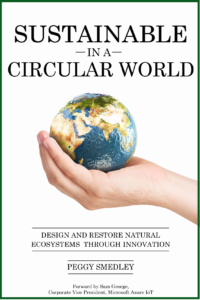EVs (electric vehicles) are surging, due to a number of factors. The IEA (Intl. Energy Agency) says sales of EVs doubled in 2021 from the previous year to a new record of 6.6 million. Back in 2012, just 120,000 electric cars were sold worldwide. In 2021, more than that many are sold each week. This trend is set to continue in the years ahead as well.
Fortune Business Insights suggests the U.S. electric vehicle market size was $24.03 billion in 2020 and is projected to grow from $28.24 billion in 2021 to $137.43 billion in 2028, which represents a compound annual growth rate of 25.4% from 2021 to 2028. Such factors driving this growth are promotion activities, government policies, and stringent vehicle emission regulations.
The U.S. government has introduced various strict regulations to reduce carbon emissions from the automotive sector. At a state level, several are moving toward implementing ZEV (zero-emission vehicle) regulations to accelerate the uptake of electric cars. In 2020, states with ZEV regulations were responsible for about two-thirds of the overall sales, according to Fortune Business Insights.
The U.S. is also seeing news steps being taken at the federal level as well. Earlier this month, the Biden-Harris Admin., and the U.S. EPA (Environmental Protection Agency) proposed pollution standards for cars and trucks.
The first set of proposed standards announced earlier in April, the “Multi-Pollutant Emissions Standards for Model Years 2027 and Later Light-Duty and Medium Duty Vehicles,” builds on EPA’s existing emissions standards for passenger cars and light trucks for model years 2023 through 2026. The proposal keeps the regulatory design of previous EPA standards for light-duty vehicles but leverages advances in clean car technology to further decrease both climate pollution and smog- and soot-forming emissions.
The second set of proposed standards also announced in April, the “Greenhouse Gas Standards for Heavy-Duty Vehicles – Phase 3,” would apply to heavy-duty vocational vehicles (such as delivery trucks, refuse haulers or dump trucks, public utility trucks, transit, shuttle, school buses) and trucks typically used to haul freight. These standards would accompany the criteria pollutant standards for model year 2027 and beyond heavy-duty vehicles that EPA finalized in December 2022 and represent the third phase of EPA’s Clean Trucks Plan.
The EPA suggests the proposed standards would better air quality for communities across the country. Together, these proposals would avoid nearly 10 billion tons of carbon dioxide emissions, which is equivalent to more than twice the total U.S. carbon dioxide emissions in 2022. The organization also suggests this will save thousands of dollars throughout the lives of the vehicles meeting these new standards and reduce America’s reliance on approximately 20 billion barrels of oil imports.
Of course, hurdles to EV adoption still remain. Vehicle range, higher upfront costs, insufficient model availability, and lack of awareness are still some factors that hold back widespread adoption. As some of these continue to change, EV adoption will continue to grow at greater speed.
Want to tweet about this article? Use hashtags #IoT #sustainability #AI #5G #cloud #edge #futureofwork #digitaltransformation #green #ecosystem #environmental #circularworld


